Design (as a) process
It's the journey, not the destination.
Designing requires extensive knowledge in many fields and a lot of skills, both intellectual and manual. Skills like fine tridimensional sense, knowledge in geometry, mathematics, mechanics, anatomy and kinetics, proficiency with 2d or 3d software and lets not forget a feel for the beautiful. But don't be afraid, because everybody can design objects. Remember the times in when we used to build huts, homemade bows or extraordinary worlds made with toys like Lego. Working with open source design does not make assumptions about your knowledge but taps on your willing to learn and improve your abilities.
Design Tactics
Open prototyping
Designers are usually expected to provide a polished product. With open source practices, this is not the case. You are encouraged to release your concept files and embryo of documentation as soon as possible. Prototyping should be done in the open, permitting other designers to join you.
Not starting from scratch
If I have seen further than others, it is by standing upon the shoulders of giants.
−Isaac Newton
Sometimes when you are begin with the design of an object your are going to find yourself face to face to with a empty white sheet of paper. But if you work with object with open source licences you will be able to implement some designing tactics that allows you to begin working from the work of others designers, instead of starting from scratch.
Copying
To produce an object identical to a given object.
−Wiktionary
Copying is the best way to learn, to appreciate, flatter and get in the mind of the original author. Copying a design, make it as identical as possible, by redrawing the files in a different application or building replicas of the original object could teach you a lot of skills and give you a great sense of satisfaction. This is all permitted and even encouraged by open source licensing.
Adapting / modifying
To make suitable; to make to correspond; to fit or suit; to proportion.
−Wiktionary
One of the advantages of open source objects is that you are allowed to adapt them to your own needs (or anyone else's needs). There could be different reasons for adapting or modifying an object. Sometimes the reasons for adapting a design could be personal (size, proportion, taste...), other times related to the physical context (climate, scale, materials available), technological context (technical knowledge and context available), social context (language, religion, tradition, icons..), etc.
If you want to share those changes, some open source licenses require that you publish them under the same license.
Forking
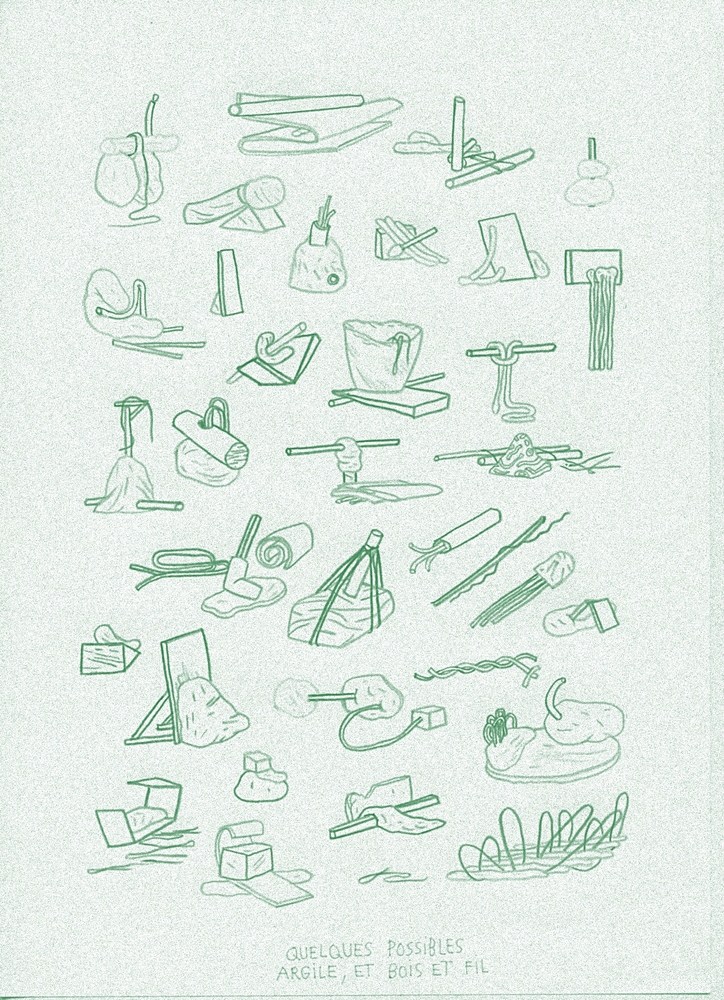
The “fork” means an object having a common root with a second one. Initially twins, these two objects will separate and follow their own developments. This terms comes from open source software development and was perceived as a negative action implying the death of one of the branch. But nowadays, forking is encouraged as a way to make adaptations to the original work that than could be merged back together afterwards to improve the original piece.
↠ An example from the Diverted objetcs workshop given by Libre Objet
Mixing / merging
To combine items from two or more sources normally kept separate.
−Wiktionary
Another advantage of open source objects is that they can be combined. You could take two (or more) open source elements and mix them in order to create a new object. This could be an interesting approach for hybrid designs and other creative explorations
Parametric design
Parametric design is a paradigm in design where the relationship between elements are used to manipulate and inform the design of complex geometries and structures. −Wikipedia
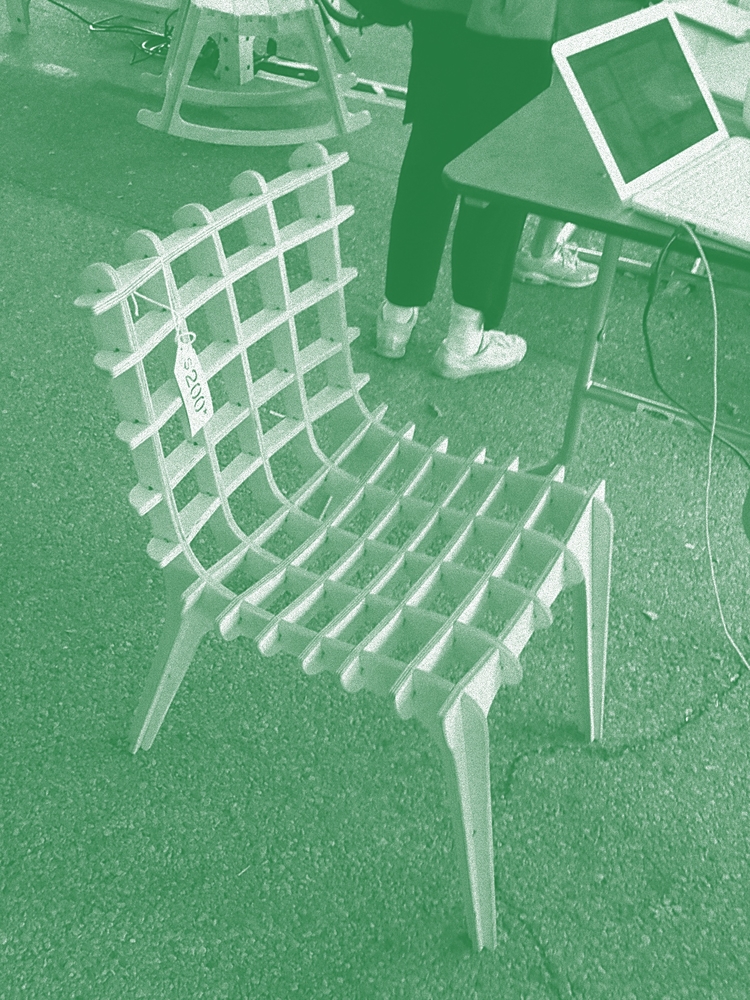
A possible approach for easier adaptations of an object is to use parametric design tools. Typically, this can be understood as defining a set of variables and relationship rules inside your design so that when those variables are modified, the resulting object is changed accordingly.
Upcycling
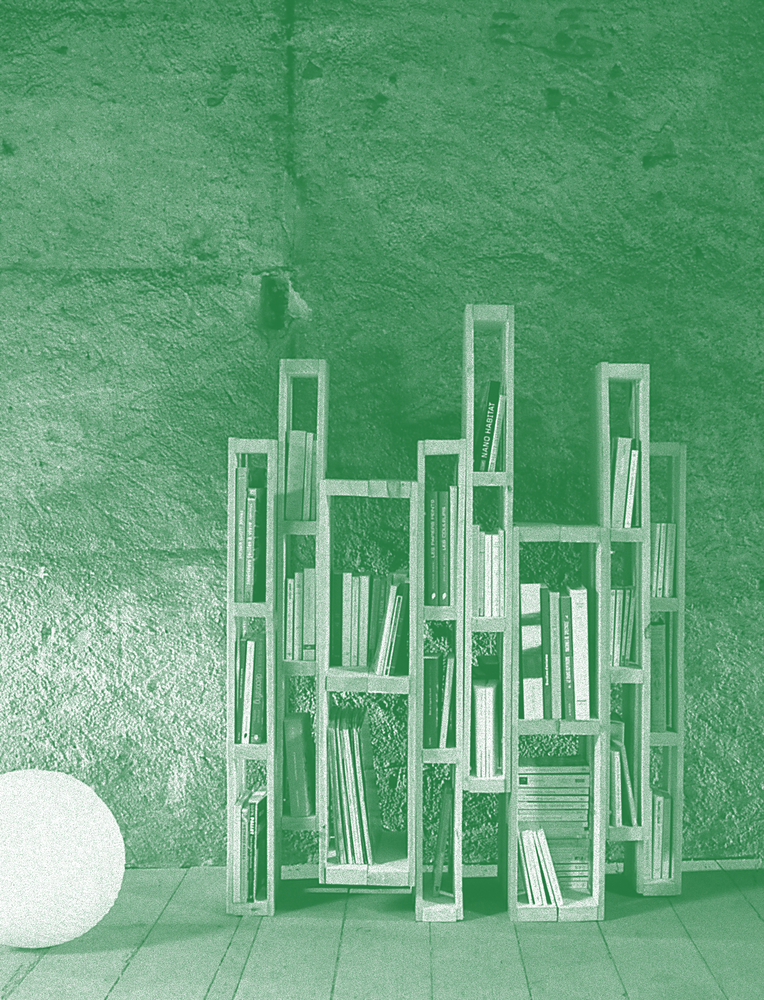
Upcycling is the process of transforming by-products, waste materials, useless and/or unwanted products into new materials or products of better quality or for better environmental value.
This approach, sometimes more associated with DIY and home crafting, could be more formalized and achieve a greater sustainability if it was also approached with the legal framework of open source licensing.
Design Tools
Physical production
Since the very first industrial manufacture machine "the spinnig jenny" the human being has been looking for improving the automatic fabrication processes in order to reach faster and more precise results. Thanks to the digital revolution that started in the middle of the previous century, nowadays we can program machines by computer to fabricate tangible object by defining them digitally. At first, this kind of technology was only available to professional industry, but in the last decades a democratization process of these technologies has started, making them accessible for everybody.
Some of these tools have been reduced in size, cost, dirtiness and noisiness, so they have become somehow more domestic. In other cases, some tools that are still big, expensive, dirty or noisy have appeared in a new kind of spaces that makes them accessible to the non professional people, sometimes named "fablabs", "makerspaces" or "micro-factories".
Neither do you have to rush into complex or automated manufacturing mechanism to design open source objects. Designing things to be made by hand could also appeal to a wider audience.
Materials
There are many types of materials that could be used for creating objects and at the same time there are many criteria to choose them. However, there are some properties you should consider for the open source object you are designing.
To achieve the largest distribution, an open source design should be fabricated anywhere by anyone or at least in the greatest amount of places possible and by the broadest range of people. For those reasons, at the time of choosing materials, you might have to consider materials that can be found easily anywhere.
The economic factor is also important. If you choose an extended material but that is expensive, only a few people will be able to build your design. Bu not only economic questions are important, you also should consider the ecologic. There are a lot of material that you can recycle, or even better, upcycle.
Finally you also have to consider the tools that you need to shape these materials. For example, glass and methacrylate are easy to find but while methacrylate could be easily cut by a common cutter, for cutting glass the tools are not as common and the techniques are not as simple.
Tools
Designers love their tools. It's important to find the right tool for your designs, but this does not mean only technically, but also ethically. Free/libre and open source tools are the only tools that allow you to adapt them to your particular needs, that respect your freedoms, your users and your collaborators.
Of course you can create open source designs with proprietary tools. But these tools are not yours. You just have a temporary revocable license to use them. And if you design something that goes outside of what they have allowed, they might take them from you.
Free/Libre and open source tools are also generally better at handling open standards.
Free/libre softwares for DAO/CAO
LibreCAD
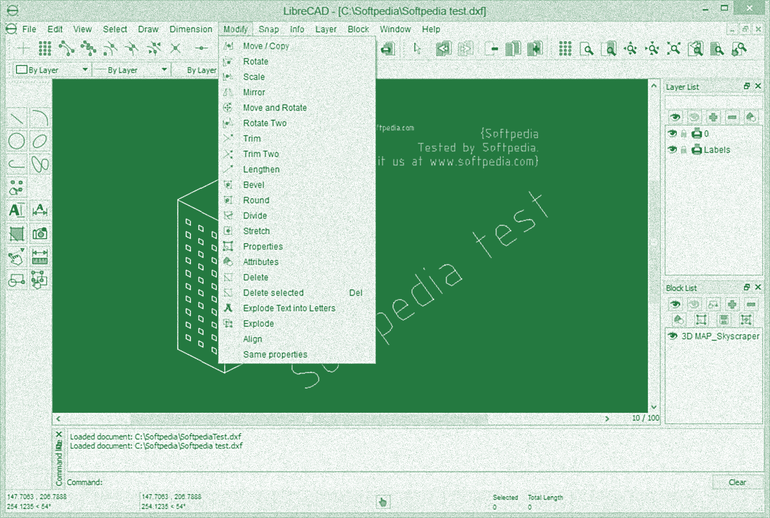
LibreCAD is a free/libre and open source CAD application for Windows, Apple and Linux that some users have compared to the proprietary Autocad.
FreeCAD
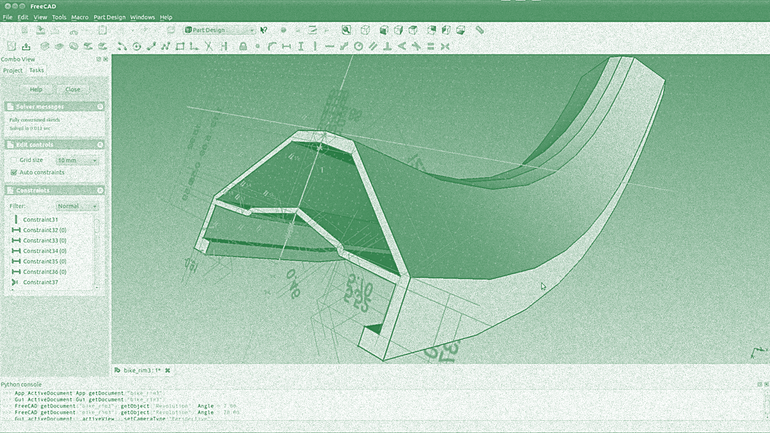
FreeCAD is a parametric 3D modeler made primarily to design real-life objects of any size. Parametric modeling allows you to easily modify your design by going back into your model history and changing its parameters. FreeCAD is a multi-platform customizable, scriptable and extensible software that reads and writes many open file formats such as STEP, IGES, STL, SVG, DXF, OBJ, IFC, DAE and many others.
OpenSCAD
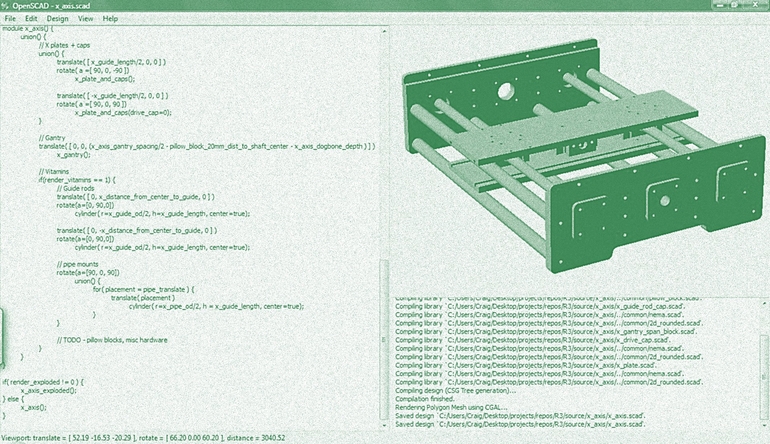
OpenSCAD is a software for creating solid 3D CAD models using code. It is free software and available on all major platforms. If you have abilities in coding and want to produce CAD files using a special scipting language, this might be the application you are looking for.
Blender

Blender is the free/libre and open source 3D creation suite. It is most well-know for its artistic capabilities in the field of 3D illustration and animation. It supports the entirety of the 3D pipeline from modeling to rigging, animation, simulation, rendering, compositing and motion tracking, even video editing and game creation. But more and more people use it to produce or manipulate files for 3D printing and CAD related tasks. Advanced users employ Blender’s API for Python scripting to customize the application and write specialized tools.
Inskape

Inkscape is a free/libre and open-source vector graphics editor that runs on all major platforms. What sets Inkscape apart is its use of Scalable Vector Graphics (SVG), an open XML-based W3C standard, as the native format.
Digital Tools for fabrication
CNC router
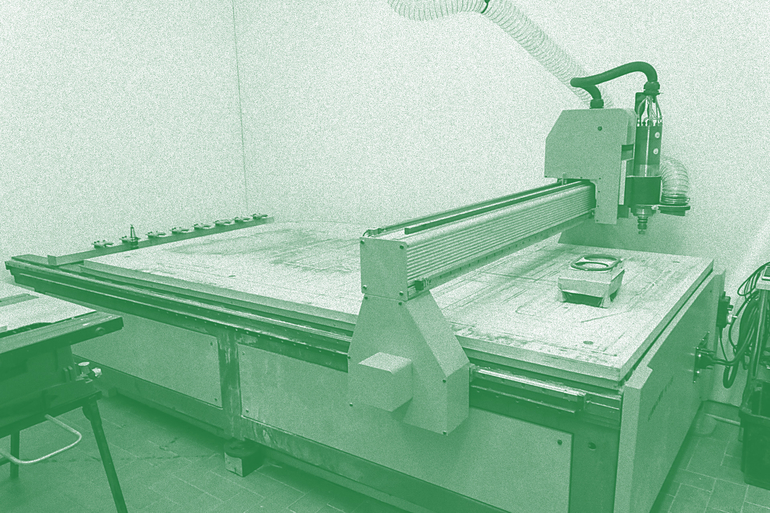
A CNC router is a computer controlled cutting machine related to the hand held router used for cutting various hard materials, such as wood, composites, aluminum, steel, plastics, and foams. CNC stands for computer numerical control. CNC routers can perform the tasks of many carpentry shop machines such as the panel saw, the spindle moulder, and the boring machine.
A CNC router typically produces consistent and high-quality work and improves factory productivity. Automation and precision are the key benefits of cnc router tables.
−Wikipedia
Laser cutter
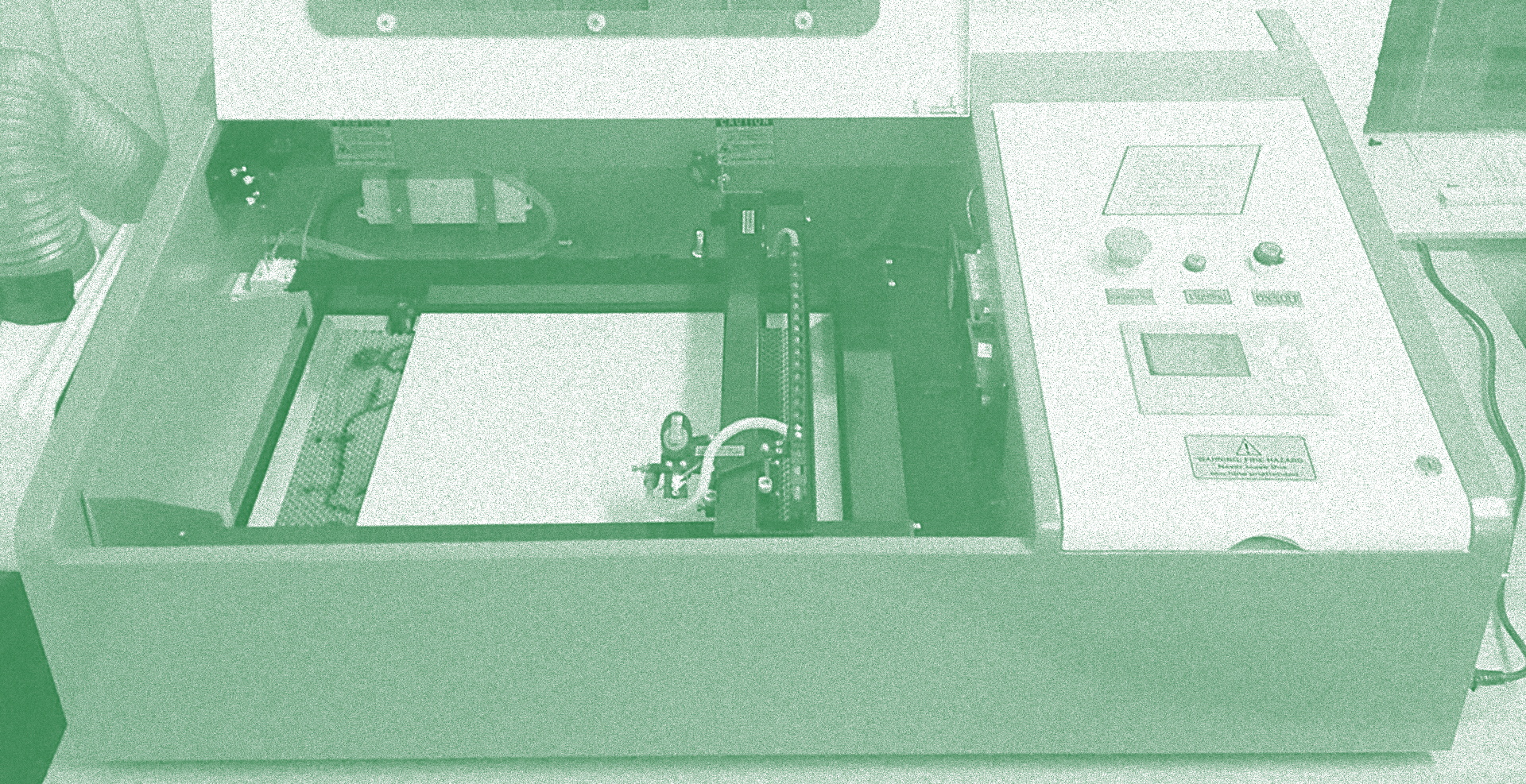
Laser cutting is a technology that uses a laser to cut materials, and is typically used for industrial manufacturing applications, but is also starting to be used by schools, small businesses, and hobbyists. Laser cutting works by directing the output of a high-power laser most commonly through optics. The laser optics and CNC (computer numerical control) are used to direct the material or the laser beam generated. The focused laser beam is directed at the material, which then either melts, burns, vaporizes away, or is blown away by a jet of gas,[1] leaving an edge with a high-quality surface finish.
−Wikipedia
3D printer
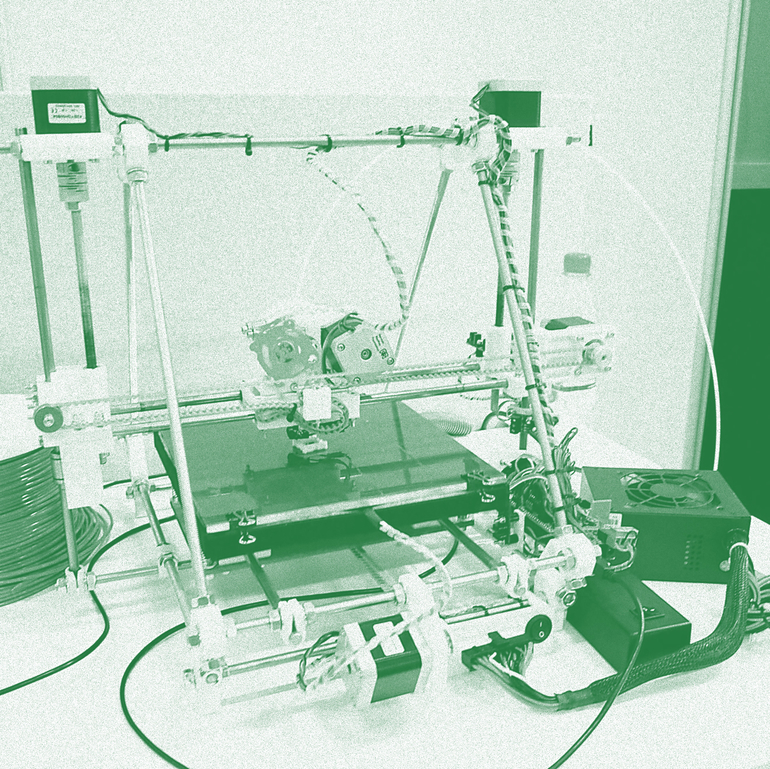
3D printing, also known as additive manufacturing (AM), refers to various processes used to synthesize a three-dimensional object. In 3D printing, successive layers of material are formed under computer control to create an object. These objects can be of almost any shape or geometry, and are produced from a 3D model or other electronic data source.
3D printing in the term's original sense refers to processes that sequentially deposit material onto a powder bed with inkjet printer heads. More recently, the meaning of the term has expanded to encompass a wider variety of techniques such as extrusion and sintering-based processes. Technical standards generally use the term additive manufacturing for this broader sense.
−Wikipedia
Build your own tools
Improving your tools by yourself or making your open source tools for doing open source design is another option. In the traditional woodworking this was a very common practice. Nowadays there are a lot of people that make their own tools or improving their own tools. For example the conversions of milling hand routers into a CNC routers or the fabrication of 3D printers.
Objects
Bouctje & REEBOeK
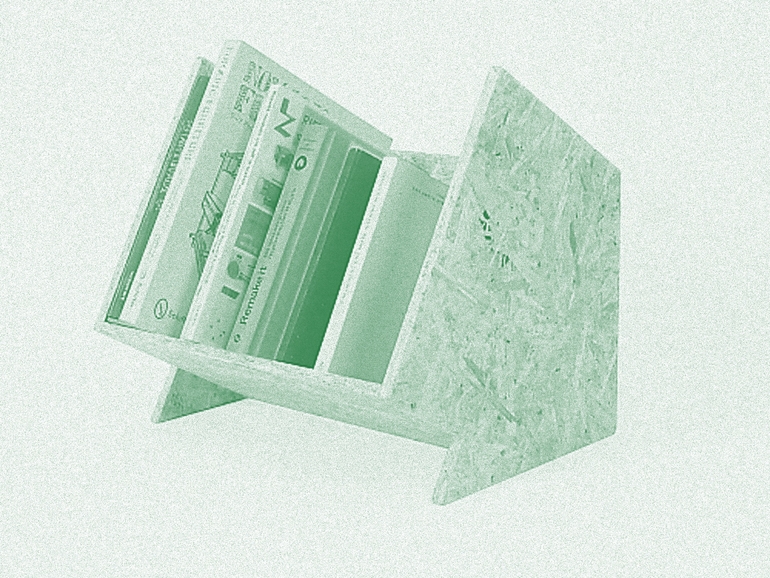
Bouctje is a bookshelf designed by Mathieu Gabiot on January 2013 and licensed with a Free Art License.
REEBOek is derived design of Bouctje made by Laurent Verly on September 2013 also licensed with a Free Art License.
↠ This is a good example about the advantages of the open source objects. Thanks to the open license of Bouctje, its design could be modified, its scale and functionality were changed, and a new object with a new purpose is born.
Wikiseat
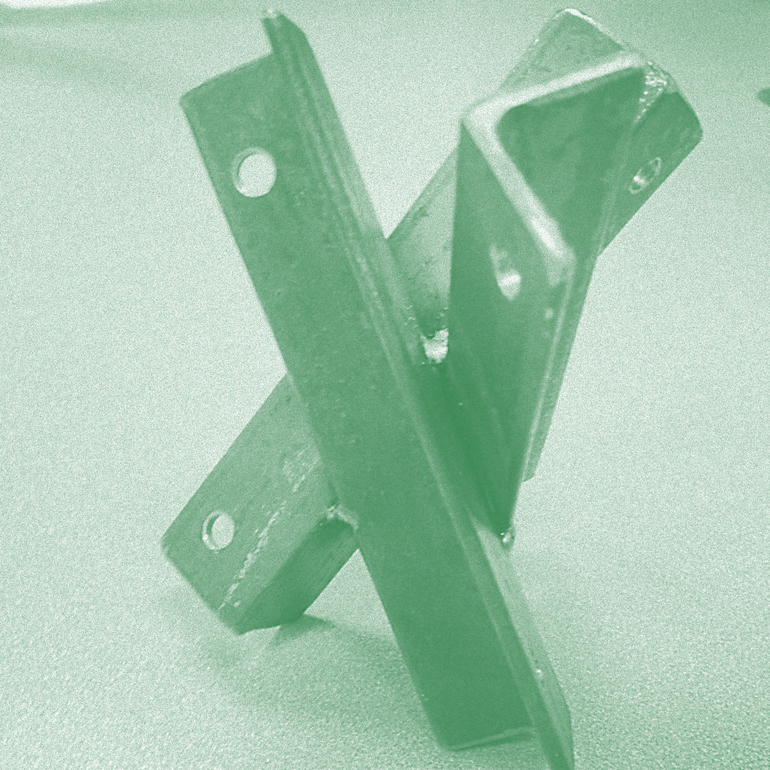
WikiSeat is an open source furniture project. That means that all of the documentation for how to build a WikiSeat is freely and openly published online.
At the heart of each WikiSeat is a Catalyst. This is the structural support, made out of welded angle iron, that helps hold three legs in place. The seat part goes on top. It is a pretty simple idea, but there are no instructions for how to assemble these parts. We encourage people to find materials rather than buying them from a store. Every WikiSeat is a truly unique creation, a reflection of the creators environment and ideas.
−Wikiseat
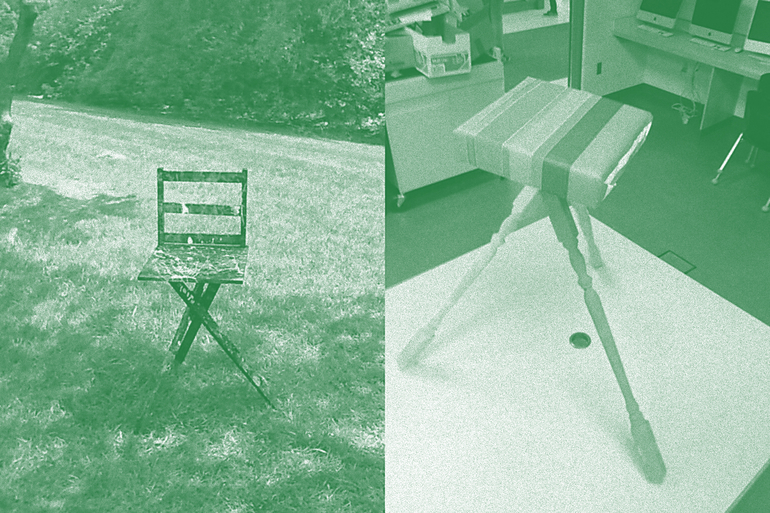
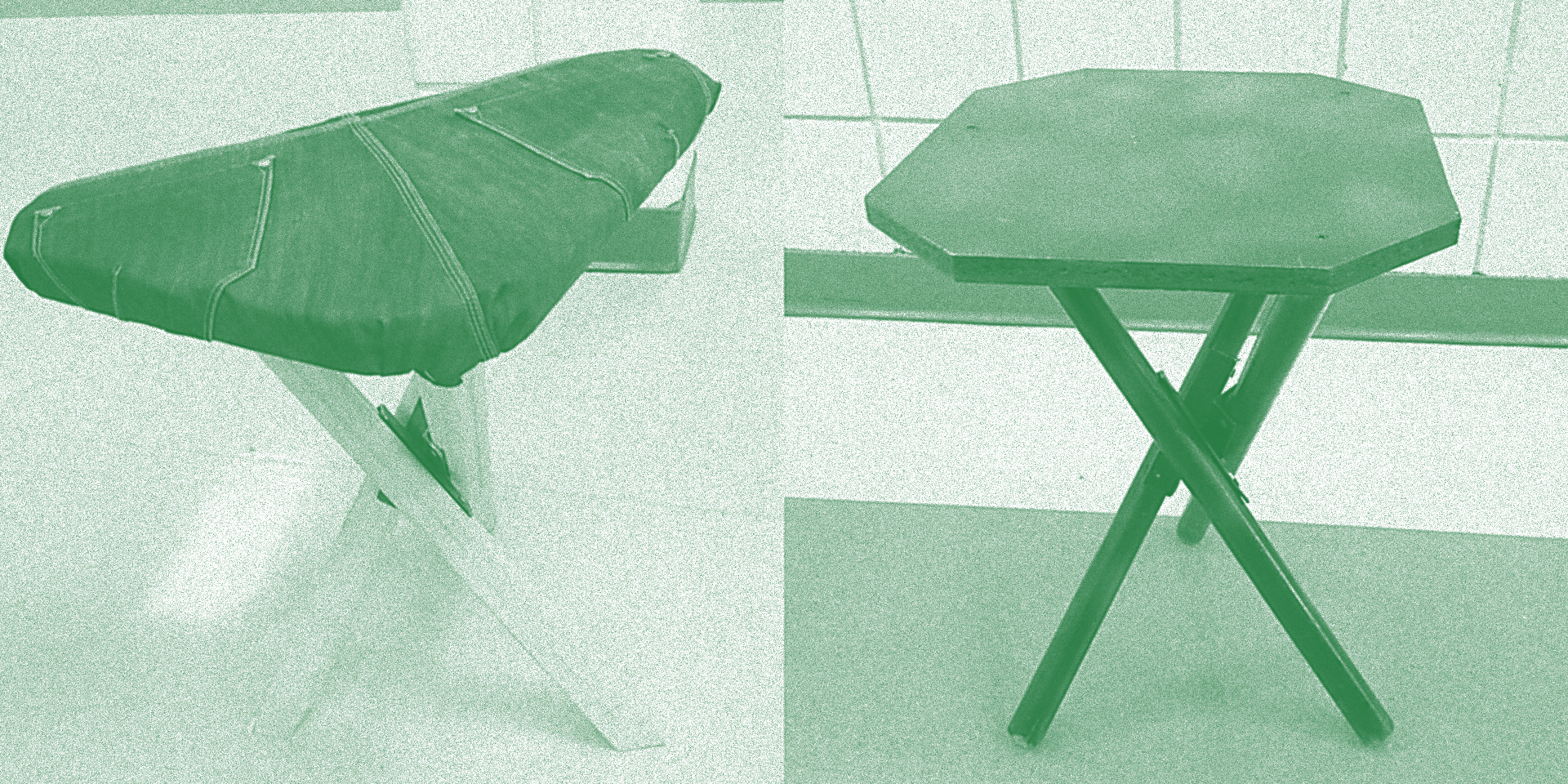
uHbench
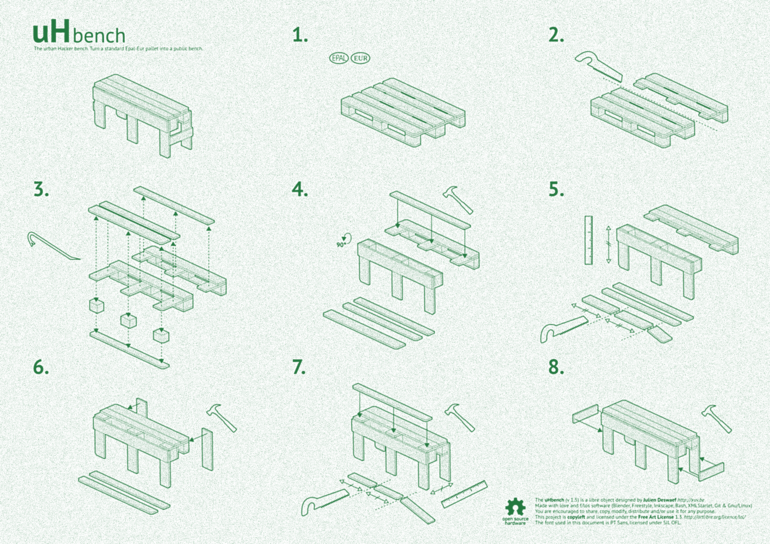
The uHbench (v 1.5) is a libre object designed by Julien Deswaef. Made with love and f/los software (Blender, Freestyle, Inkscape, Bash, XMLStarlet, Git & Gnu/Linux) Get from a standard (Epal-Eur) pallet to a public bench in just a couple easy steps. The idea came while thinking about urban hacking or how to reclaim public space with easy to find material and tools in urban areas.
http://xuv.be/uH-bench-open-source-public-bench.html
Food for thought
Strandbeest
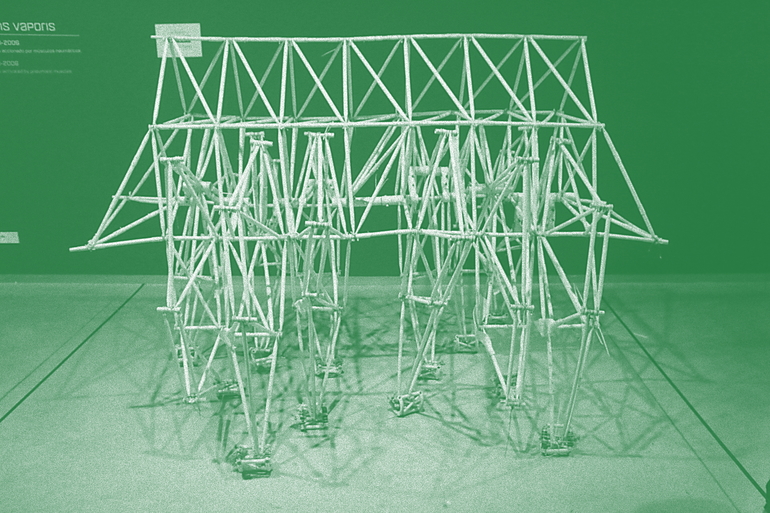
Theo Jansen has been creating Strandbeest (Dutch: strand=beach; beest=beast), wind-walking examples of artificial life, since 1990. What was at first a rudimentary breed has slowly evolved into a generation of machines that are able to react to their environment. Constructed as intricate assemblages of piping, wood, and wing-like sails, Jansen's creations are constantly being improved and have become excellently adapted to their sandy beach environment. −Wikipedia
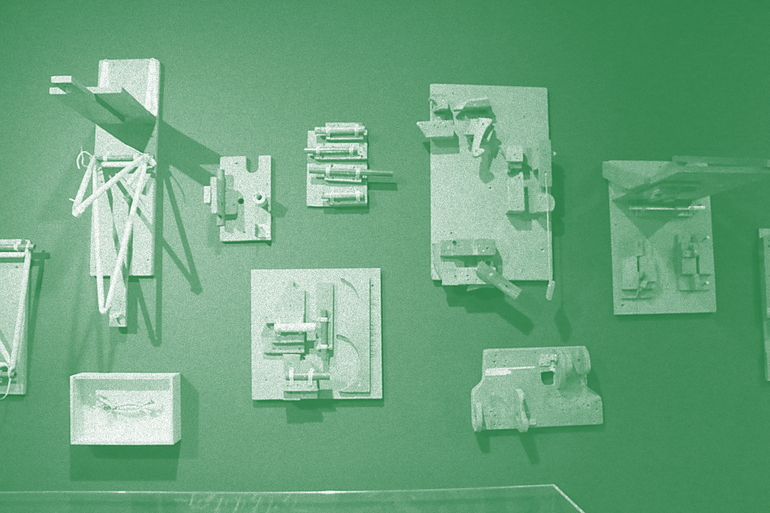
This is a particular interesting exemple since, Theo Jansen has also built his own tools for creating and producing these machines and has followed a principle of forking and merging between every instance of his project.
Upcyclist
Filled with an enormous range of materials and objects, this unique book will inspire any designer or design-conscious consumer to incorporate upcycling into their creative practice or interior design projects.
−Upcyclist by Antonia Edward.
1962 - Versioned physical sculpture
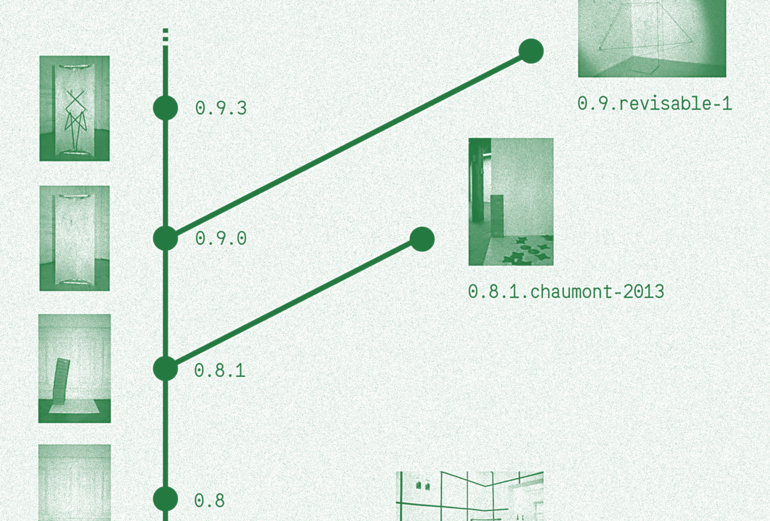
Sculptures conceptualized using a revision control system and represented physically. http://raphaelbastide.com/1962/
An exploration by Raphaël Bastide of the relation between open source tools, documentation and conceptualization of physical artefacts.
Sea Chair
Sea chair is made entirely from plastic recovered from our oceans. Together with local fishermen, marine plastic is collected and processed into a stool at sea.
−Studio Swine
Open questions
- Do you think that the open source licenses make designing easier for non-professional people?
- Do you think that the open source licenses make designing more democratic?
- Do you prefer starting from scratch or from existing design?